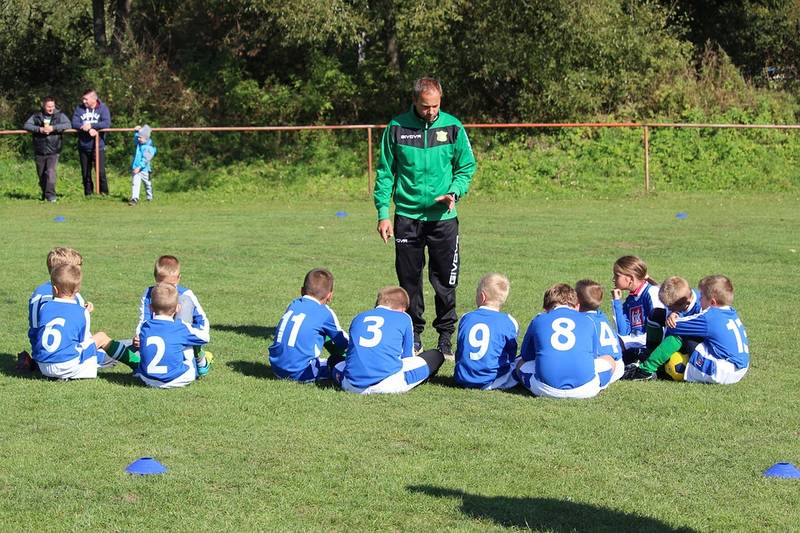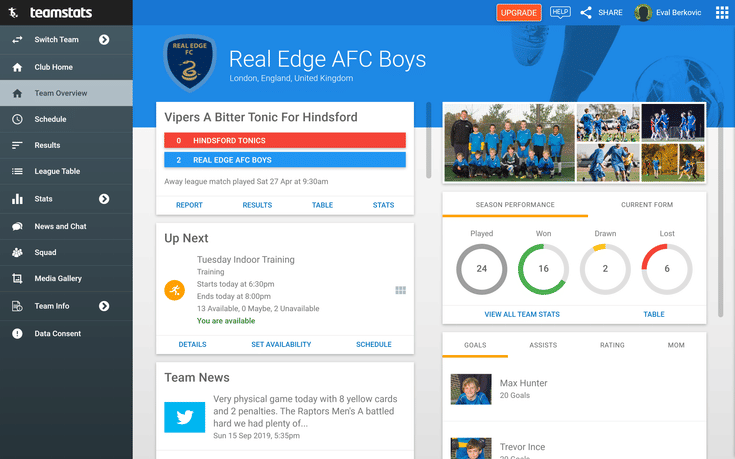Football coaching sessions are the cornerstone of player development at all levels of the game. From grassroots clubs to professional academies, well-structured training provides the foundation for technical skill development, tactical understanding, and physical fitness. Effective football sessions typically follow a structured format including warm-up activities, technical drills, tactical work, and small-sided games that reinforce learning in a match-like environment.
Planning and delivering quality sessions requires coaches to consider the age and ability of their players, establish clear objectives, and create a positive learning environment. Many coaches follow a progressive approach, starting with simple exercises before building to more complex scenarios that challenge players appropriately. The best training sessions incorporate elements of decision-making and problem-solving while maintaining high levels of engagement and enjoyment.
Resources for football coaches have expanded dramatically in recent years, with organisations like The FA and independent platforms offering session plans, video demonstrations, and coaching education. These tools help amateur and youth coaches deliver more professional training experiences, even without formal qualifications. While soccer coaching methods continue to evolve globally, the focus remains on creating meaningful learning opportunities that translate to improved performance on matchday.
Fundamentals of Football Coaching
The bedrock of effective football coaching lies in establishing clear training principles and understanding the psychological aspects that drive player performance. These elements work together to create a holistic approach that develops both technical skills and mental resilience.
Developing a Training Philosophy
A well-defined training philosophy provides structure and purpose to every coaching session. Successful coaches build their approach on core football principles while adapting to their team's specific needs and capabilities.
Begin by identifying your key values—whether prioritising possession, pressing, or counter-attacking football. Your philosophy should reflect both your vision and the realities of your player group's abilities.
Progressive training designs allow skills to develop naturally, moving from simple to complex drills. Incorporate both technical and tactical elements in each session to ensure comprehensive development.
Many top coaches and sports scientists recommend the constraints-led approach, where modifying practice variables helps players discover solutions independently. This method enhances decision-making capabilities and adaptability during match situations.
Regular evaluation is crucial. Assess whether your training philosophy translates to match performances and be prepared to refine your approach based on evidence.
Understanding Player Psychology
The psychological dimension of coaching is equally vital as tactical knowledge. Effective coaches recognise that each player responds differently to various motivational approaches and feedback styles.
Create a positive learning environment where mistakes are viewed as growth opportunities rather than failures. This mindset fosters resilience and encourages players to take calculated risks during matches.
Communication must be clear, consistent and age-appropriate. Young players particularly benefit from positive reinforcement, while more experienced footballers might respond better to analytical feedback.
Sports scientists emphasise the importance of developing mental skills alongside physical ones. Concentration exercises, visualisation techniques and goal-setting can significantly enhance performance under pressure.
Understanding group dynamics helps coaches manage the collective psychology of the team. Recognise how different personalities interact and use this knowledge to build cohesion and mutual respect within the squad.
The best coaches remain adaptable in their psychological approach, recognising when players need encouragement versus when they require constructive challenge to reach their potential.
Session Planning and Execution
Effective football coaching sessions require careful planning and methodical execution to maximise player development. A well-structured session addresses technical, tactical, physical and psychological elements while keeping players engaged and motivated throughout.
Designing Soccer Drills
Football drills should focus on specific skills and be appropriate for your players' age and ability level. Begin with simple exercises that allow players to develop confidence and technical proficiency before introducing complex scenarios.
Design drills that replicate match situations and include decision-making elements. For instance, passing drills can progress from static to dynamic, with increasing defensive pressure.
Ensure each drill has clear objectives that players understand. "What are we trying to achieve here?" should be answerable in one sentence.
Consider using the STEP framework (Space, Task, Equipment, People) to modify drills. Adjusting these variables allows you to differentiate practice for mixed ability groups.
Allow 10-15 minutes per drill to maintain focus. Track which drills engage players most effectively and build a repertoire of successful activities.
Structuring Small Sided Games
Small sided games (SSGs) form the cornerstone of modern football coaching methodology. They condense full-match scenarios into smaller spaces with fewer players, increasing touches and decision-making opportunities.
Begin with appropriate pitch dimensions – a general rule is 10x15 metres per player. Adjust these dimensions to emphasise different outcomes: smaller areas promote technical skills; larger spaces develop fitness and tactical awareness.
Set clear rules and constraints to target specific objectives:
- Playing with fewer touches encourages quick decision-making
- Creating zones restricts movement and develops positional discipline
- Using target players develops awareness and communication
Rotate teams regularly to maintain intensity and allow players to experience different opposition. Keep score to foster competitive elements, but emphasise performance over results.
Include coaching points during natural breaks rather than frequent stoppages. This maintains flow and allows players to solve problems independently.
Incorporating Warm-Ups and Cool-Downs
Effective warm-ups prepare players physically and mentally for the session ahead. Structure warm-ups to progress gradually over 10-15 minutes, beginning with light mobility exercises before increasing intensity.
Include these key components:
- Pulse-raising activities (light jogging, dynamic movements)
- Dynamic stretching (leg swings, arm circles)
- Football-specific movements (changes of direction, acceleration/deceleration)
- Technical practice (passing, ball familiarity)
"Ball-in-play" warm-ups engage players more effectively than traditional athletic warm-ups. Simple possession games or rondos serve both technical and physiological purposes.
Cool-downs are equally important but often neglected. Allocate 5-10 minutes at session end for light jogging followed by static stretching. This period also provides valuable time for session review and feedback.
Adapt warm-up intensity based on weather conditions and previous activity levels. In colder weather, extend the warm-up period to reduce injury risk.
Technical and Tactical Training
Technical and tactical training forms the backbone of effective football coaching sessions. These elements work together to develop players who can execute skills under pressure while making intelligent decisions within the team's strategic framework.
Enhancing Player First Touch
A player's first touch can make or break attacking opportunities. Quality first touch training requires progressive drills that simulate match conditions while focusing on technique.
Begin with static exercises where players receive passes from different angles, controlling with various surfaces—inside foot, outside foot, sole, and thigh. Gradually increase difficulty by adding movement and pressure from defenders.
The "Triangle Control" drill is particularly effective. Three players form a triangle, with one player in the middle receiving passes from alternating teammates. The central player must control and return the ball with different parts of the foot before turning to receive from another direction.
Use small-sided games that reward good first touches. For example, award bonus points when players successfully control a difficult pass and maintain possession under pressure.
Attack vs. Defence Dynamics
Understanding the relationship between attackers and defenders is crucial for developing tactical awareness. 3v3+2 exercises are excellent for this purpose, where one team attacks the goal while the other focuses on defensive shape.
Create scenarios that require players to solve tactical problems. For example, set up a 4v3 attacking overload situation where attackers must exploit numerical advantages while defenders work on delaying and containing threats.
Position-specific training helps players understand their roles in both attacking and defensive phases. Defenders should practice stepping up to intercept passes, while attackers work on creating space through movement off the ball.
Small-sided games with tactical constraints encourage decision-making. Try a possession game where teams score points by completing five consecutive passes, forcing players to balance risk with maintaining possession.
Match-related exercises should gradually increase in complexity, moving from unopposed patterns to fully opposed situations that mimic real match conditions.
Professional Growth for Coaches
Successful football coaches recognise that their development never stops, requiring continuous learning and connection with peers. The journey towards mastery in coaching demands both formal education and practical exchange of ideas with fellow professionals.
Continuing Education and Certifications
Coaches seeking to advance their careers should pursue recognised qualifications through the FA Coaching Pathway. These structured programmes range from the introductory Level 1 Certificate up to the prestigious UEFA Pro Licence for elite coaches. Beyond formal certifications, regular attendance at workshops and coaching conferences provides exposure to new training methodologies and tactical approaches.
Many professional clubs now offer open training sessions where grassroots coaches can observe elite trainers at work. These opportunities provide valuable insights into session structure and player management techniques.
Online learning platforms have expanded access to professional development resources. Coaches can now participate in webinars, download session plans and complete modules remotely while balancing their coaching commitments.
Building a Coaching Network in the USA
While the United Kingdom remains the heartland of football coaching traditions, expanding connections to the American soccer scene offers valuable perspective. The rapid growth of the sport in the United States has created innovative coaching approaches that blend European traditions with North American sports science.
Coaching exchanges between UK clubs and American counterparts have become increasingly common. These partnerships allow British trainers to experience different training cultures while sharing their expertise abroad.
Social media platforms and specialised forums enable coaches to connect with international colleagues. Many UK coaches find value in joining groups that include American counterparts to discuss training methods and player development models.
Annual coaching conferences in major US cities like Los Angeles and New York attract trainers from around the world. These events provide networking opportunities and exposure to different tactical philosophies that can refresh a UK coach's approach.













